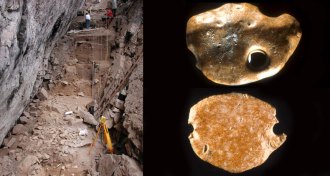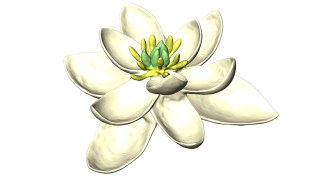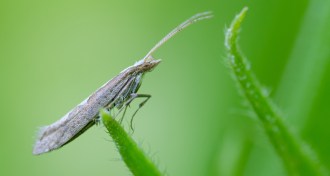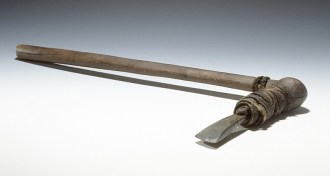News in Brief
-
 Particle Physics
Particle PhysicsDark matter still remains elusive
Scientists continue the search for particles that make up the universe’s missing matter.
-
 Archaeology
ArchaeologyPeople may have lived in Brazil more than 20,000 years ago
Stone Age humans left behind clues of their presence at a remote Brazilian rock shelter.
By Bruce Bower -
 Astronomy
AstronomyStar that exploded in 1437 tracked to its current position
Astronomers have hunted down a star seen exploding in the year 1437 and traced it since, offering clues to the stages of a white dwarf.
-

-
 Genetics
GeneticsGene editing creates virus-free piglets
Pigs engineered to lack infectious viruses may one day produce transplant organs.
-
 Particle Physics
Particle PhysicsNeutrino experiment may hint at why matter rules the universe
T2K experiment hints at an explanation for what happened to antimatter.
-
 Plants
PlantsA new portrait of the world’s first flower is unveiled
A reconstruction of the first flowers suggests the ancient blooms were bisexual.
-
 Materials Science
Materials ScienceDiamond joins the realm of 2-D thin films, study suggests
Scientists squeezed graphene sheets into diamondene.
-
 Astronomy
AstronomyAstronomers may have found an exomoon, and Hubble is going to check
A distant object may be the first exomoon detected.
-
 Agriculture
AgricultureGM moth trial gets a green light from USDA
GM diamondback moths will take wing in a New York field trial.
-
 Archaeology
ArchaeologyCopper in Ötzi the Iceman’s ax came from surprisingly far away
Copper for the ancient Iceman’s blade traveled about 500 kilometers to his northern Italian home region.
By Bruce Bower -
 Climate
ClimateRising temperatures may mean fewer passengers on airplane flights
Global warming could force airplanes to carry a lighter load — and fewer passengers —on each flight.